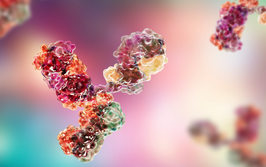Getting a Handle on High Potency
We need to optimize and then accelerate HPAPI drug product development
Alyn McNaughton | | Opinion

New treatments under development are increasingly specialized, selective, and potent. Highly potent API (HPAPI) compounds are designed to be more effective at the site of therapy while minimizing adverse events. The manufacture of HPAPIs, however, comes with significant challenges. By their very nature, HPAPIs are often toxic to the workers who manufacture them, necessitating a high degree of controlled handling. Additionally, the low concentrations typically required for administration make accurate dosing more challenging – each dose may only contain the equivalent of a single particle of the API as supplied from the manufacturing process. Furthermore, these new molecules are often poorly soluble to insoluble, causing bioavailability issues.
Microdosing can help advance some HPAPI products. This automated process uses specialized, highly precise weighing equipment to dose unformulated API powder into hard capsule shells. It allows for rapid product development in a solid oral dosage form typically preferred by patients. For HPAPI drug products, the dosing can be performed in isolator technology, which is sufficient for most molecules that require only small quantities of material to be handled.
But many HPAPIs have properties that prevent the use of microdosing. They may be sticky, semi-solid, liquid, too light, or “fluffy.” The powder may not flow, or API particle size/shape may be inconsistent. In some cases, compounds may be so potent that the safe containment level cannot be readily achieved or the dosage itself may be below the weighable range of microdosing.
The ability to incorporate powders into a liquid, either as a suspension or a solution, can negate many of the properties listed above. In my view, liquid-fill hard capsules (LFHCs) offer an effective formulation approach for accurate and consistent low-dose applications, as well as a safe and effective processing approach for HPAPIs.
LFHC formulations are composed of either room-temperature liquids or thermo-softening materials – the latter of which are manufactured as a molten liquid at temperatures up to 65°C. Sticky, semi-solid, and liquid HPAPIs are often miscible in liquid excipients, meaning the materials can usually form a homogenous mixture. Light, “fluffy” powders and inconsistently shaped APIs, if less miscible, can be homogeneously suspended in liquid excipients, which means they can be managed more generically. HPAPI particle size and shape variability can cause challenges when manufacturing a conventional dosage form, because powder flow properties may prevent development of a homogenous powder mix. Incorporating the API as a suspension in a lipidic excipient can help address those challenges. High-shear mixing is routine for suspensions in liquid and allows sufficient homogenization to overcome most particulate dispersion issues – and can even break down agglomerates, generally without reducing primary particle size. A thixotropic agent can be added to gel the system and prevent de-homogenization over time. For liquids, this can be accommodated within a generic, single-step mixing process, obviating the additional development time required for conventional dosage forms.
At very low doses – often needed for HPAPI products – producing a homogeneous mix to facilitate an accurate unit dose product is challenging. The greater mixing potential of powder in liquids, relative to mixing powders, can support generating some formulations as suspensions (where a powder mix would often be inhomogeneous). For a liquid suspension formulation to provide accurate low doses, the process still requires the API’s primary particle size to be small enough to ensure a sufficient number of particles in each unit dose – so that an even distribution of particles results in an accurate dose. For larger particulates, this can be achieved using a bead mill to reduce the particle size of an insoluble powder suspension directly in the liquid manufacturing process. In this process, particle size reduction happens as part of routine mixing and does not require a separate process.
The ideal situation is to generate a solution that ensures the exact dosage (no matter how low) is determined only by the filling accuracy into individual capsules. Specialized liquid-filling machines provide a very high level of accuracy and precision for this process.
An overall benefit of using LFHCs for HPAPI product development is their relatively straightforward manufacturing process compared with other technologies capable of producing low-dose product profiles, such as wet granulation tableting. Liquid hard capsule formulations only require three processes – mix, fill, and seal – whereas wet granulation tableting requires seven: dry blending, wet mass preparation, sieving, drying, screening, granulation, and tablet compression. Powder stages during the process also require containment for airborne particulates, adding another step. Especially where a solution has been achieved, liquid formulations can also help accelerate the development process from feasibility studies to commercialization; the scale-up of the bulk formulation mixture to meet commercial demand only requires dissolution of API in excipients to ensure an equivalent process.
The risks of handling powder HPAPIs during LFHC development, from dispensing until incorporation into the liquid, can be mitigated using routine isolator and closed powder transfer technology throughout the development stages. For the remaining processing steps, the powder is solubilized or entrained into the liquid, so operators are safe to continue working with significantly less engineering controls.
Finally, many new HPAPIs are also lipophilic and suffer from poor solubility and bioavailability. They are often not therapeutic enough to meet their clinical targets. For these drugs, developers can use liquid and lipid technologies to emulsify HPAPI molecules, enhancing solubility without an additional enabling technology.
In my view, LFHCs offer many flexible benefits to today’s candidate HPAPI molecules. The market value from existing and new HPAPI product launches is expected to double between 2018 and 2025, from around $18 billion to $35 billion (1). With 25 percent of all drug products – and around 70 percent of drug products in the oncology sector (2) – requiring some type of specialized handling, the need to develop these products quickly and safely has never been greater. HPAPI formulations are challenging to work with, but solutions like LFHCs can offer an effective path forward.
- Grand View Research, “High Potency Active Pharmaceutical Ingredients (APIs) Market Analysis By Product (Synthetic, Biotech), Manufacturer (In-house, Outsourced), Drug Type, Therapeutic Application (Oncology, Hormonal, Glaucoma, Others), And Segment Forecasts, 2018 – 2025” (2017). Available at bit.ly/2XdctE0.
- RootsAnalysis, “HPAPIs and Cytotoxic Drugs Manufacturing Market” (2014). Available at bit.ly/2Zsh3Ry.



















